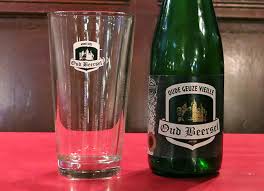 It seems fitting given my post a couple days ago (read here) that I end this week by reviewing a traditional lambic. I have had a 2014 bottle of Oud Beersel Oude Gueuze Vieille kicking around my cellar for the last few months and recently in a puckerish mood decided to pop it open.
It seems fitting given my post a couple days ago (read here) that I end this week by reviewing a traditional lambic. I have had a 2014 bottle of Oud Beersel Oude Gueuze Vieille kicking around my cellar for the last few months and recently in a puckerish mood decided to pop it open.
The Oud Beersel produces a gueuze that is loyal to lambic brewing traditions. Spontaneously fermented it is created by blending one, two and three year old lambics. A very tart, yet still drinkable beer is the result. The brewery is located in the town of Beersel, which is a suburb on the southwest edge of Brussels. The latest incarnation of the brewery began in 2005, although there are some legitimate historical links tracing back to 1880.
Their version of gueuze pours cloudy dark yellow with a thin, loose white head. Lots of effervescence going on, giving the beer a very lively appearance. The aroma produces a clean lactic tang with a meadow honey backing. I also get some soft floral notes and an earthy, pungent accent.
The sip starts with a hint of honey, fruity sweetness and a light grain. However, this gentle beginning is quickly overtaken by a lactic sourness that sharpens the beer. I notice it does not totally take away the beer’s body and sweetness, leaving some residual sugar on the palate. As it works its way back the tartness gives a bit of space for a musty funk in the finish. The mustiness and tartness share the stage at the end, and along with the residual sweetness give the beer a three-way finish. Its body seems fuller and more rounded than many gueuzes I have had.
It is a complex version of gueuze. I wonder if it retains a bit too much sweetness (even after 2 years in the bottle), as it is not quite as puckering as most versions. I find this both unusual and something of a setback for the beer, interfering with my puckered enjoyment. Still, it has an interesting multi-dimensional character to it that score it a few points, in particular the funky Brettanomyces character – which very likely developed in the bottle of the past two years.
For me it can’t overtake some of the classic versions like Cantillon and Tilquin, mostly because the blending leaves a little too much sweetness. However, I wouldn’t turn up my nose if you offered me one – at least until the tartness causes it to crinkle.

Leave a Reply